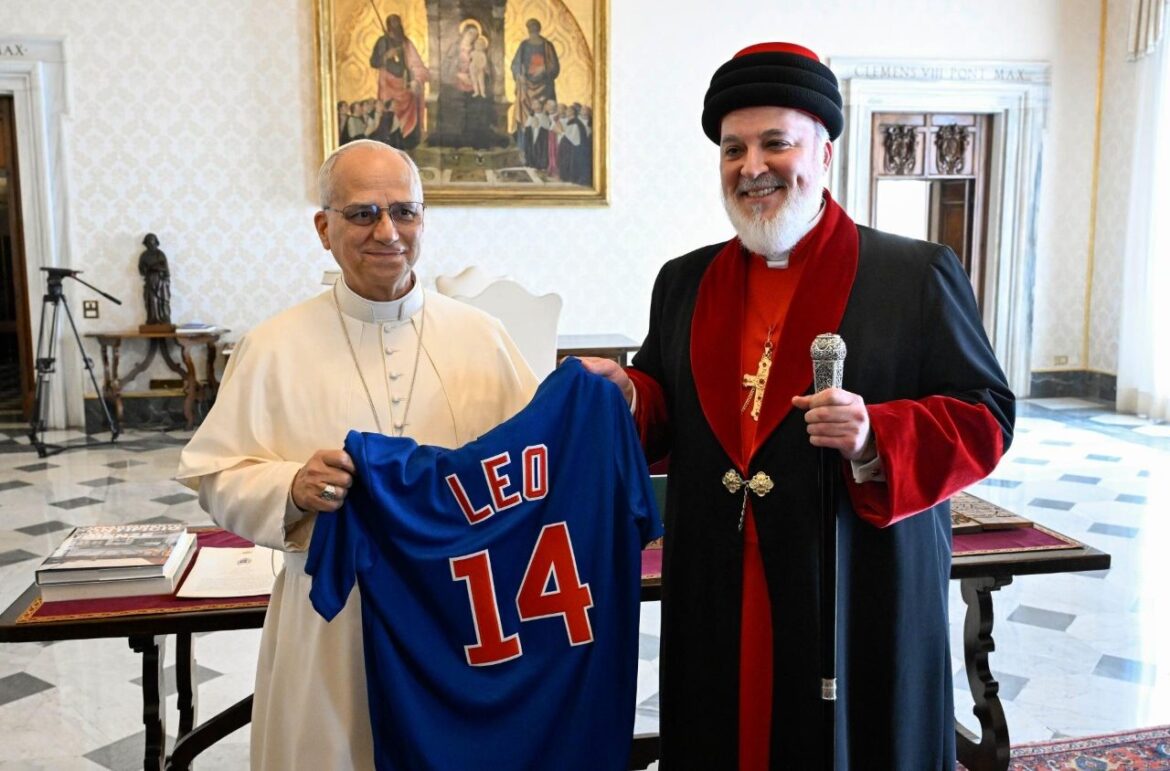Pope Leo addresses the Catholicos Patriarch of the Assyrian Church of the East and the Members of the Joint Commission for the Theological Dialogue between the Catholic Church and the Assyrian Church of the East. In his discourse, he praises the progress the two Churches have made on their path of dialogue.
By Kielce Gussie
Pope Leo XIV welcomed His Holiness Mar Awa III, the Catholicos Patriarch of the Assyrian Church of the East and the Members of the Joint Commission for the Theological Dialogue between the Catholic Church and the Assyrian Church of the East to the Vatican on Monday.
Speaking with them, the Holy Father explained how the combined visits of the Catholicos Patriarch and the Commission members “bear witness to the face that fraternal encounter and theological dialogue are mutually constitutive elements on the path toward unity.”
Pope Leo stressed that the “dialogue of truth” is an expression of “the love that already unites our Churches, while the ‘dialogue of charity’ must also be understood theologically.”
A time of growth
To mark the 30th anniversary of the official dialogue between the two Churches, the Catholicos Patriarch made a visit to Rome in 2024. Pope Leo highlighted that “the progress made over these years is significant, having faithfully followed the mandate and methodology established by our predecessors.”
Referencing the 1994 Joint Declaration of Pope John Paul II and His Holiness Mar Dinkha IV, the Holy Father reiterated how “communion presupposes unanimity concerning the content of the faith, the sacraments, and the constitution of the Church.”
This three-sided description created the framework for the next steps in the theological dialogue between the two Churches. The 1994 document helped resolve a 1,500-year-old controversy, which in turn advanced the dialogue between the two “mutual recognition of sacraments, enabling a certain communicatio in sacris between our Churches.”
Pope Leo expressed his gratitude to the theologians in the Joint Commission for their dedication and work to helping reach these agreements.
A new focus
Now, the Pope said, the focus of the dialogue between the two Churches is the constitution of the Church. Here, the Holy Father pointed out that “the principal challenge lies in jointly developing a model of full communion, inspired by the first millennium, while thoughtfully responding to the challenges of our time.”
Yet, as his predecessors have argued, Pope Leo agreed this will not be achieved by “absorption or domination”. Rather, the model should encourage a sharing of gifts among the two Churches.
He stressed that “on this journey towards full communion, synodality presents itself as a promising path forward.” The Holy Father continued, reflecting on Pope Francis’ words in the Final Document of the Synod on Synodality: “The journey of synodality undertaken by the Catholic Church is and must be ecumenical, just as the ecumenical journey is synodal”.
With the spirit of the Synod in mind, Pope Leo expressed his hope that the 1700th anniversary of the Council of Nicaea will help concretely apply forms of synodality among all Christians and “inspire us with new ‘ecumenical synodal practices’.”
Closing, the Pope asked for the intercession of all the saints of both Churches, especially Saint Isaac of Nineveh, on this pilgrimage of dialogue. Through their intercession, Pope Leo prayed that the Christians in the Middle East always bear faithful witness to Christ, and he asked that “our dialogue hasten the blessed day when we will celebrate together at the same altar, sharing in the same Body and Blood of our Saviour, ‘so that the world may believe’ (Jn 17:21)”.


